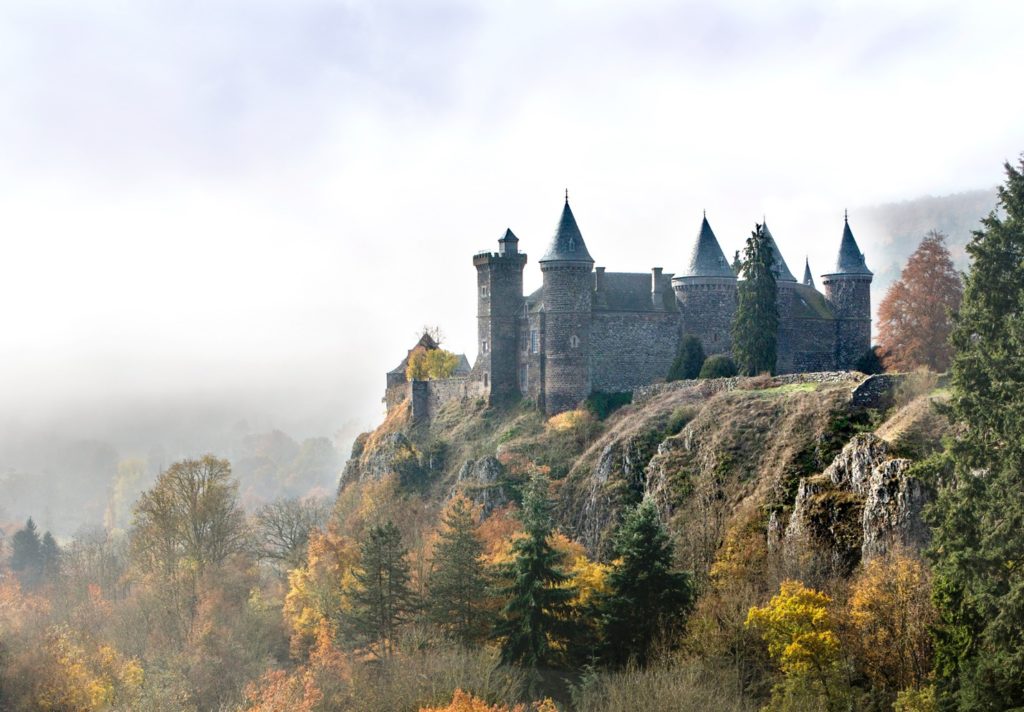Le Sailhant

04 71 60 98 00//06.83.18.39.35
Location des jardins pour réception.
Du 1er avril au 30 septembre
• Avril, Mai : du mercredi au dimanche de 14h à 18h sur
réservation
• Juin : du mercredi au dimanche de 10h à 12h et de 14h à 18h
• Juillet et août : Tous les jours de 10h à 12h et de 14h à 18h
• Septembre : du mardi au dimanche de 10h à 12h et de 14h à 18h
• Vacances scolaires : Nous consulter.
Visite guidée au départ de chaque heure.
En juillet et août : – le matin : chaque début d’heure – l’après-midi
: toutes les 1/2 heures sauf le samedi et le dimanche
(chaque début d’heure).
Adulte : 15,50 €
Enfant (6-12 ans) : 9,50 € (6-12 ans)
Etudiant : 11 €
Handicapé :9.50 € (personne à mobilité réduite)
Groupe adultes :13 € (A Partir de 15 personnes).
Gratuit pour les moins de 6 ans.
Tarif groupe à partir de 15 personnes.
Autres périodes : voir le site Internet
Situé en plein cœur des volcans d’Auvergne et âgé de 1000 ans, le château du Sailhant est un château fort trônant sur un spectaculaire éperon rocheux dominant une cascade féerique.
D’une tour seigneuriale, le château du Sailhant devint un château fort pendant la guerre de Cent ans. A cette période, il fut le théâtre d’une lutte permanente entre Anglais et Français, aboutissant à de nombreux sièges ainsi qu’à la construction de fortifications commandées par d’éminentes familles françaises.
Amélioré et remanié pendant la Renaissance, il devint au XVIIIème siècle une résidence secondaire d’été pour Joachim Joseph d’Estaing, évêque à Saint-Flour. Après la révolution française, le château fut utilisé par des fermiers. Rénové au XIXème siècle par un célèbre entrepreneur né au hameau du Sailhant, Mary Hiacinth Raynaud, le château fut racheté en 1997 par M. Joseph Pell Lombardi. Le château nécessita une campagne de restauration d’une quinzaine d’années. Aujourd’hui entièrement restauré et meublé, le château du Sailhant offre une visite guidée historique à travers sa grande salle, la chambre seigneuriale, la bibliothèque ou encore la chapelle.
Le site est inscrit au Site Remarquable de France depuis 1945 et aux Monuments historiques depuis septembre 2019.
Château du Sailhant is a thousand-year-old château-fort located in the mountainous Auvergne region of central France. It stands on a 100’ high triangular volcanic spur, overlooking a mystical waterfall that drops into a prehistoric volcanic crater lake. The walls of the château and its seven towers are ancient black lava blocks and the roof is stone.
From a Seigneurial tower, during the Hundred Years War the château evolved into a fort. Owned by prominent French families, it was in a continuous tug-of-war between the French and the English, resulting in numerous sieges and increased fortifications.
Enhanced during the Renaissance it became, in the early 18th century, a distinguished summer residence for Joachim Joseph d’Estaing, bishop in Saint-Flour. After the French Revolution, château du Sailhant was used by farmers. In the late 19th century, a major renovation commenced but was never completed by Mary Hyacinth Raynaud, an entrepreneur born in the tiny village at the base of the château. In 1997, the château was acquired by Joseph Pell Lombardi, a distinguished American architect, who specializes in the restauration of historic structures. Under his direction, the château underwent a fifteen years’ conservation effort. Fully restored and furnished with ancient regional furnishings, the guided tour consists of all of the principal rooms, including the Grande Salle, Seigneurial room, library, dining room, salons, chapel and kitchen, which are still in daily use.
The site is listed Site Remarquable de France since 1945.
